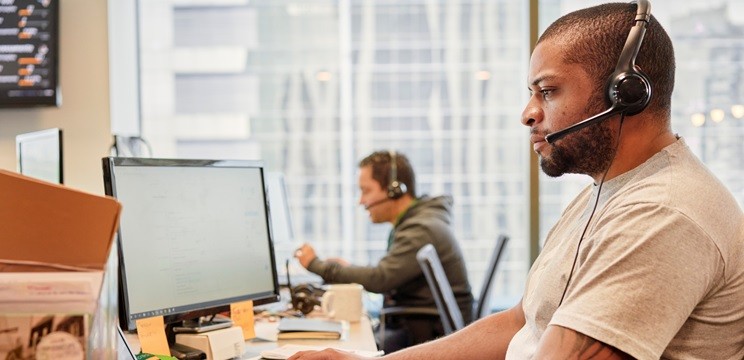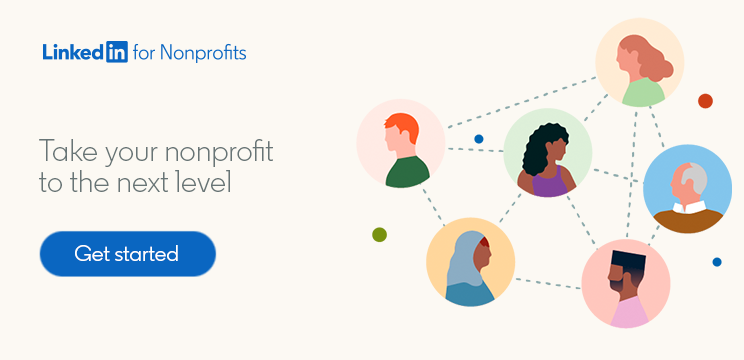
6 Steps Nonprofits Should Take When Developing Their Return-to-Workplace Plan
As the global environmental, health, and safety lead here at LinkedIn, I’ve spent a lot of time recently working on LinkedIn’s return-to-workplace plan. I know firsthand that this is a daunting prospect for leaders and employees alike, and many are hesitant to make firm decisions about when they will go back. But even if your nonprofit doesn’t intend to reopen its physical offices and facilities right away, it’s important to start developing a plan to help mitigate risk and keep your people informed when you do.
This is a situation nobody was prepared for, so it will require thoughtful consideration and careful strategizing to create a plan that works. Here are some important steps you can take to get started, based on my experience developing LinkedIn’s plan and my discussions with leaders at other organizations.
1. Build a planning team and seek expert guidance when needed
At many organizations, the onus of creating the return-to-workplace plan has fallen on one individual, often the head of HR. But no matter what size your nonprofit is, you can’t go this alone.
Start putting together a team that can support you and fill any knowledge gaps you might have. If you’re not a health and safety expert, is there someone at the organization who can provide that insight? If your nonprofit employs or works with immunocompromised individuals or other vulnerable groups, is there a consultant in your network you could tap for their specialized expertise? Are there any aspects of your plan that will need to be run by legal? Asking these kinds of questions early can help you ensure your plan doesn’t contain glaring blind spots that could expose people to unnecessary risk.
Remember, no one has all the answers. But by partnering with enough people who have some of them, you can build a robust and nuanced plan that helps protect your workforce and your wider community.
2. Follow official guidance, not what’s in the media
There’s a lot of contradictory advice out there about COVID-19, and some of it is wildly inaccurate. Rather than seeking out guidance that’s been filtered through the lens of the media, get it straight from the source—starting with government bodies.
Find out what the official regulations and recommendations are at a regional and local level. These should provide the foundations of your plan, since they’ll not only help you promote safety, but also stay compliant. You can then find more expert advice and best practices to flesh out your plan by visiting the websites of trusted sources like the World Health Organization (WHO), Centers for Disease Control and Prevention (CDC), and European Centre for Disease Prevention and Control (ECDC).
Keep in mind that regulations and best practices are subject to change as new research is conducted and the situation evolves. Ensure that someone on your planning team is keeping up with the latest developments, and be prepared to adjust your strategy accordingly. A one-and-done approach simply will not work, so adopting an agile mindset early is critical.
3. Aim for consistency, but leave room for regional differences

To avoid making your plan too complicated and to create a more consistent experience for employees across the organization, it’s worth establishing an overarching framework that still leaves some room for localized flexibility. That way, you can account for stricter regulations in some regions, without needing to create and manage drastically different plans for every single location.
For example, you might decide to establish two-meter distancing requirements in all your locations, even in countries where local guidelines call for less. This is a simple step you can take to help mitigate risk and minimize confusion. But if only one of your offices is located in a region that requires daily temperature checks, you might make the decision to only purchase the required equipment for that particular office.
It’s up to you which rules you standardize and which are a little more fluid. Your plan can always be updated later, so if you find one strategy works especially well in one office, you might later choose to roll this out at scale.
4. Tailor your plan to your resources
Every organization is different, so no two return-to-workplace plans will be the same. Since many nonprofits are already working with limited budgets, it’s essential to tailor your plan to your resources and capabilities, while still keeping safety top of mind.
Take supplies of personal protective equipment. If you have the resources, you might choose to put together a little kit for each employee on their first day back at the office. This could include some back-up masks in case they forget to bring one, a personal bottle of hand sanitizer, and a printed copy of the new office rules. But if your budget doesn’t stretch this far, investing in more communal resources—like hand sanitizer dispensers placed at strategic intervals throughout the office and a box of masks at the front desk—can be a cost-effective alternative.
5. Take every opportunity to educate your people and ease their minds
Some employees are understandably going to be anxious or uncertain about returning to the office. You can do a lot to ease their minds by providing educational resources at every turn.
Before their first day back, consider sending them some information about what they can expect—and what will be expected of them. Many trusted health organizations, including the ones we listed above, provide free-to-download factsheets and helpful videos that you could compile and share with your people, such as this handwashing tutorial from Johns Hopkins Medicine:
You could also make a video yourself detailing what’s changed and what employees’ first day back will look like. This can be as simple as walking around your office with a smartphone showing employees any new measures you’ve implemented, such as a one-way system or distanced desks. Ultimately, it’s still the same old workplace, just with a few added safety measures in place—and by helping them see that in advance, you can give employees confidence and clarity before they return.
To reinforce healthy and compliant behavior, ongoing education is crucial. Put up visible signage around the office to act as frequent reminders, and consider establishing a weekly or monthly video conferencing call that employees can join if they have questions or concerns. If you’re executing a phased return plan, this is a great way to ensure employees still at home can have their questions answered, too.
You can also empower managers and team leaders to tailor education to their specific team cultures. The fundraising team, for example, is likely more metric-driven and may respond well to language around hitting their “handwashing target” for the day, while the marketing and communications team may find a presentation more effective and engaging.
6. Tap the wider nonprofit and business community for support
As you’re developing and executing your plan, don’t be afraid to look for help and inspiration from your peers. Everybody is figuring this out as they go, and many nonprofits and commercial businesses alike have been open and transparent about the challenges they’re facing and the steps they’re taking to overcome them.
LinkedIn is a great platform for tapping into this wider community for support and insight. My own team used LinkedIn to connect with and learn from other organizations as we were building our plan, and many people reached out to me with questions about what we were doing, too. It may be especially helpful to look to organizations that are a step or two ahead of you in their roll-out, since this can help you anticipate challenges on the horizon and proactively avoid any hurdles they encountered.
If you’re hesitant about reaching out to people directly, joining the LinkedIn for Nonprofits Official Group is a good way to connect with like-minded individuals and get a sense of what leaders at other nonprofits are talking about. If you have questions, you could ask them in the Group to crowdsource suggestions, or you could run them by the Group’s administrator, who may be able to connect you with someone who can help.
Good luck!

